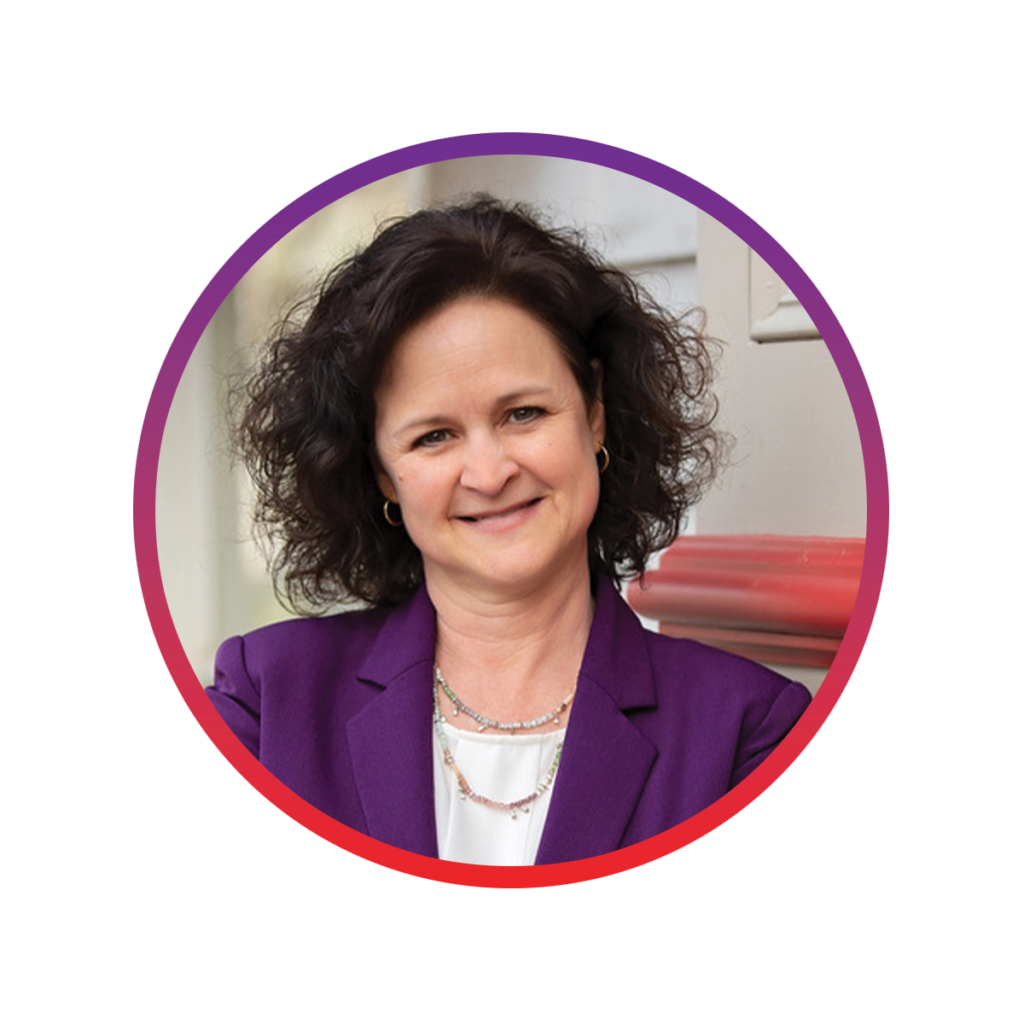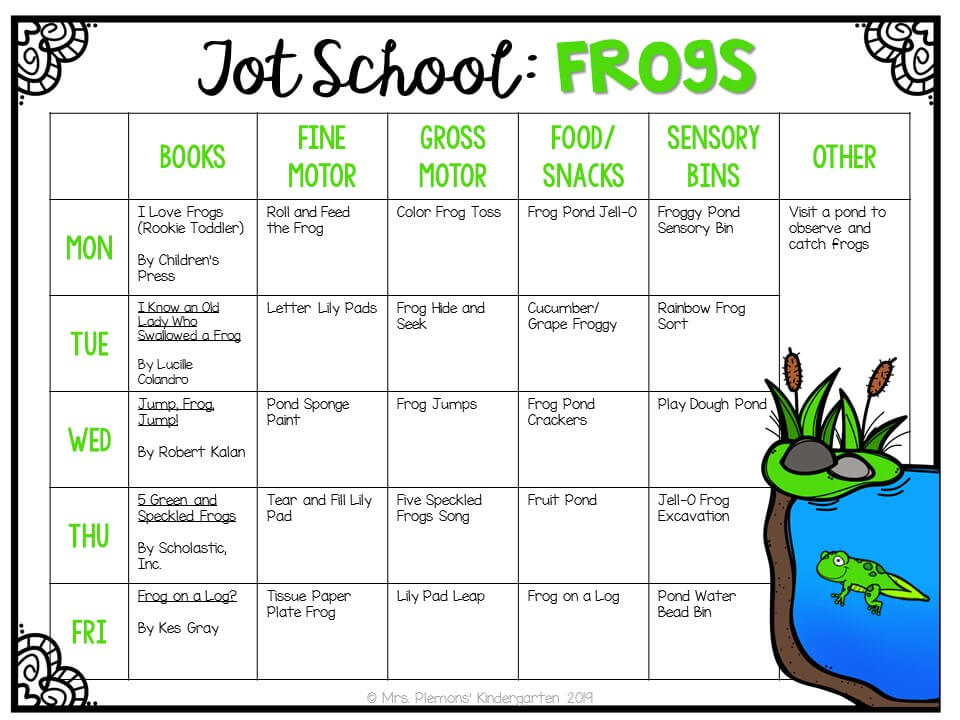This podcast episode discusses how drama can be used as an interdisciplinary tool to engage students and create a safe environment for self-expression. The post Teaching Channel Talks Episode 109: Moving Beyond Intervention with Strong Reading Foundations (w/Keely Keller & Dr. Stephanie Stollar) appeared first on Teaching Channel.
In this episode of Teaching Channel Talks, guest host Keely Keller steps in for Dr. Wendy Amato to explore the critical topic of multi-tiered systems of support (MTSS) with Dr. Stephanie Stollar, an expert in reading science and educational frameworks. Stephanie highlights the essential role of effective Tier 1 instruction in improving literacy outcomes and aligning with the science of reading.
The conversation dives into evidence-based practices for universal instruction, emphasizing the importance of addressing diverse student needs through data-informed decision-making, small-group instruction, and early interventions. Stephanie also sheds light on the barriers educators face, such as limited resources, data literacy challenges, and entrenched practices, while offering actionable strategies to overcome them.
Listen in on this insightful discussion to discover how schools can create powerful Tier 1 instruction that meets the needs of all learners and reduces the number of students requiring intervention.
Our Guest

Dr. Stephanie Stollar is a leading expert in literacy with over 30 years of experience in improving educational outcomes through evidence-based practices. She founded Reading Science Academy in 2020, an online community dedicated to supporting educators in enhancing literacy in their classrooms. Dr. Stollar is also an assistant professor at Mount St. Joseph University, where she advises future education policy leaders. She has served in various influential roles, including as Vice President of Professional Learning at Acadience Learning and a School Psychologist. A board member of the Innovations in Education Consortium and a co-founder of a national alliance supporting reading science in higher education, Dr. Stollar continues to build educator capacity worldwide through workshops and publications.
Our Host

Keely Keller is the Director of Professional Programs for Teaching Channel in Eagan, Minnesota. She holds a Bachelor of Science in Special Education from St. Cloud State University, a Master’s of Arts in Education from Hamline University, and additional Director of Special Education and Principal Licensures from the University of Minnesota. Before joining Teaching Channel, Keely served students with special needs as a teacher and Special Education Coordinator in a suburban Minnesota school district. Keely has years of experience working with new teachers.
Resources for Continued Learning
In this episode of Teaching Channel Talks, Keely Keller and Dr. Stephanie Stollar discuss how the science of reading and data-informed decision-making can help educators create equitable and effective literacy instruction for all students. To support and expand on the ideas discussed in the episode, Stephanie has shared several invaluable resources to help educators take actionable steps toward improving literacy outcomes in their schools:
Reading Science Academy
Founded by Stephanie Stollar, the Reading Science Academy focuses on advancing literacy education through evidence-based practices and professional development. Explore resources and training opportunities to enhance your teaching and improve student literacy outcomes.
MTSS Implementation Guide
This guide, created by Stephanie Stollar, provides a structured framework for schools and districts implementing multi-tiered systems of support. It offers strategies for collaborative problem-solving, tiered instruction, and professional learning to improve student outcomes.
Fundamentals of Reading Assessment
Gain insights into the four key purposes of assessment within MTSS: screening, diagnostics, progress monitoring, and outcome evaluation. This resource outlines how to use assessments effectively to identify and address student needs.
Looking to advance your skills and knowledge in teaching literacy? Teaching Channel’s graduate-level courses offer research-based strategies to help you grow as an educator while impacting your students’ success.
Episode Transcript
Keely Keller: Welcome to Teaching Channel Talks. I’m your guest host, Keely Keller, borrowing the microphone from Wendy Amato today. As often as we can, we jump into conversations about topics that matter in education. In this episode, we will look at multi tiered systems of support and the importance of effective Tier 1 instruction as it relates to the science of reading.
It’s a pleasure to welcome Dr. Stephanie Stoller. Dr. Stephanie, welcome. Please take a moment to introduce yourself.
Dr. Stephanie Stollar: Thanks, Keely. Thanks for inviting me to this conversation. I am a half time assistant professor in the reading science program at Mount St. Joseph University. And in the other half time of my professional life, I support districts and state offices of education, non profits, other teacher education programs to improve reading outcomes for students.
Keely Keller: And just to kick things off, would you mind explaining to our listeners what MTSS is and why it’s such an important framework for supporting all students?
Dr. Stephanie Stollar: MTSS stands for multi tiered systems of support, and it’s a framework for using data in a structured decision making process. I tend to focus on reading specifically, but the MTSS framework applies to social, emotional and mental health issues that students might have.
I tend to focus on students who are struggling with literacy outcomes, but MTSS applies to even high performing students. It’s a framework that allows you to bring together the needs of students. With the resources that you have available in your school so that all students are successful.
Keely Keller: Yeah, so let’s talk a little bit more about that.
How do you see a strong tier 1 instruction laying the foundation for? Student success in reading and what role does the science of reading play in shaping that tier one instruction?
Dr. Stephanie Stollar: Well, the definition of the science of reading that I use is posted on the reading leagues website within the defining guide, the science of reading defining guide and that definition includes.
The improvement of student outcomes, and there’s a section in the guide that talks about MTSS as the framework for doing that student outcome improvement. So there’s a very tight connection. I would say between the science of reading and MTSS because. The science of reading is not just about swapping out programs.
It’s not just about giving teachers professional development. You know, these are kind of the actions that you hear people talking about these days. And what we need to be talking about is, how do we for example, figure out what instructional programs our students need? How do we figure out if the instructional programs we’re using or considering have any evidence of working for students with disabilities.
We need for students like our students. We need to be talking about do we have time in our schedule that the authors of this instructional program recommend? What kinds of professional development do our staff need for delivering this program? We might be considering so all of those factors what I think of as the context of the school.
That’s what we need to be considering when we’re implementing quote unquote, the science of reading. So 1 of the most important findings in my opinion, in the science of reading literature is that most reading problems can be prevented and maybe a close 2nd to that is that early intervention impacts positively on students and families.
So this is where the 1st tier of MTSS. what we call universal instruction or primary prevention comes into play. This is often called universal instruction because It’s what we are doing with all students. So it’s the first line of of instruction with the goal of reducing the number of students who need intervention.
The first way we teach reading should be so lined up to what students need. It should be so powerful that it causes the vast majority of students to reach our grade level reading outcomes. So that We don’t have very many students who need intervention so that we can actually provide intensive intervention where it’s needed so that students catch up through our intervention to grade level reading expectations.
Keely Keller: You know, I’m curious to know your take on it, but a lot of times I’ve heard that tier one instruction should be such that effective in a way that approximately 80 to 85 percent of your students are succeeding with that level of instruction. Is that still hold true?
Dr. Stephanie Stollar: Yes. So, not that that is a set in stone number. And if you’re getting 78%, you haven’t achieved it. But it’s a general parameter to represent the fact that schools have limited resources and you can’t intervene with very many students. And so the way that you get it right, so that the vast majority of students are successful, like 80 percent is that you find out what students need.
So this is where. Universal screening is so helpful. The purpose is to tell you what students in each grade level need so that you can customize the first way you teach reading to meet those needs. So one of the real confusions. Right now is that some people hear that tier one instruction is universal instruction.
It’s for all students and they think that means all students should get the same thing. And that is not the case. That’s not how the model originated. It’s not. What is effective for students? And in some cases, you may have half of the grade level. You may have 75 percent of the grade level who are not performing at grade level reading expectations, and it would be impossible for you to intervene successfully with half of the grade level.
It all comes down to the results you’re getting for your students. If you are getting all of your students to read with the way that you’re currently organizing your resources, you should keep doing it. And if you are not, if you have 40, 50, 60 percent of your students who need intervention, you might need to think about doing business differently.
And the place to start is. Classroom reading instruction, what you’re doing in that ELA block.
Keely Keller: So, let’s talk a little bit more about that.
So, many educators have heard the term universal supports in context of tier 1. But can you just clarify what type, like, a few examples of evidence based reading practices that would be used in Tier 1 or universal supports that would be used in Tier 1?
Sure,
Dr. Stephanie Stollar: so the Tier 1 instruction should include everything that we’ve learned from the reading research about what to teach in terms of those essential skills, phonemic awareness, phonics and spelling, text reading fluency, vocabulary and oral language, reading comprehension. Those essential skills should be the driving force behind tier one instruction.
We should also be relying on the research base for how to teach those skills in terms of the findings around How humans learn all things right. So how we learn new information in terms of the instructional hierarchy. The fact that direct and explicit instruction is more effective for novice novices in any domain, including beginning readers.
The way that we organize ourselves in terms of some of the things that I mentioned earlier. So here I would bring up the idea that tier one instruction doesn’t have to be all whole group. So, we know from the reading research that students learn at a faster pace when the instruction is directed at their current skill level.
Students learn at a faster pace. When they are in small skill based groups so that the teacher can target instruction to what those students need. They can provide immediate corrective feedback. They can provide additional practice opportunities when needed. They can monitor that small group much easier than they can in a whole group.
And we should be designing that tier one instruction In a way that recognizes the research around the fact that students. Learn best when instruction is focused on their skill, and that’s not always related to a label. A student who is identified as being an English learner, a student who’s identified as a multilingual learner, a student who’s identified with a learning disability, a student who’s receiving Title 1 services they may all have exactly the same instructional need, and so grouping is key.
Based on that instructional need and based on skill will help accelerate all of those students progress rather than, you know, serving them in these sort of silos that we’ve set up in schools.
Keely Keller: Yeah, I think I’m having a bit of a moment when you said this as well as a special educator universal screening to me was like, seeing which kids may potentially either now or in the future need intervention, not necessarily.
information for classroom teachers to use to potentially differentiate the instruction that’s happening in tier one in that core classroom. So even, you know, that many years of experience having this conversation is a huge aha moment for me. And you saying that just the idea of using small groups as part of your core reading instruction, I mean, that lines, as you said, right up with the research of kids needing more opportunities to practice.
Specific feedback those types of things as well. So that’s great to hear. And so that kind of leads us into the next question. What are some of the common challenges schools face when trying to strengthen tier one literacy instruction, and how can they overcome the hurdles?
And I feel like my brain right away goes to understanding data, data literacy and knowing what to do with the information that we’re gathering. But I’m curious to hear your response.
Dr. Stephanie Stollar: Yeah, I’m definitely having the right kind of data about your students. Is important. And I would say that the right kind of screening data, in my opinion, would be indicators of those five essential skills that I mentioned That don’t take a lot of time to gather that are directly assessing students performance of those essential skills and that the level of performance on those skills predicts something important about reading in the future, such as passing a state accountability assessment and.
The factor that folks often don’t look for in screening is what we’re just talking about. And that is that you can aggregate the results that you can look at the percentage of students who are on track or not on track and use it for program evaluation. Use it to have conversations about. What your tier one instruction should look like.
So I think that’s a critical component. There are lots of barriers. I could list lots of barriers to, you know, uh, to doing effective tier one instruction. Not having teams, not having grade level teams who are trained in a database decision making process or have like you were mentioning a guide or a rubric or a tool that walks them through what to talk about, that’s a real barrier, not having enough time to meet together, not being scheduled in a way that allows everybody, special educators, EL staff, speech language pathologist, everybody to meet weekly as a team.
Having the wrong instructional tools. Is a real barrier to doing what I’m describing, and I would say wrong in terms of not research aligned wrong in terms of not matching where the students skills are wrong in terms of only allowing for whole group instruction in a setting where there are diverse student needs a lot of the old ways of operating get in our way.
Of better reading outcomes. There’s a lot of this is the way we’ve always done it. This is the way we’re comfortable operating. I just experienced this actually last week with a teacher who told me that her school had spent the summer talking about doing this kind of, you know, skill based flexible grouping for tier one.
I think it was with first grade. They started the school off school. You’re off really unpacking their data, understanding what that grade level needed, getting all of the adult resources lined up and in place to serve these groups. And after a couple of weeks, they could see in their progress monitoring data.
that students were learning. I think she said maybe half of the students after three or four weeks of small group instruction had caught up to expectation. So it was highly successful very, very quickly. And yet the teacher said they didn’t want to do it anymore.
Keely Keller: I mean, that makes me sad. I, you know, as a, as a former special educator, and I know that you can relate to this.
I think when we first started talking about MTSS, a response to intervention, it really was seen as a hoop, a hoop to jump through to get to a special education evaluative process. But it’s so much more than that. And so I always love to kind of, you know, chat with people about the fact that. Yeah, but the whole point is really to keep kids out of intervention and provide what they need initially so that we don’t have to even go there.
How can instructional leaders and teachers ensure that the tier one instruction is meeting the needs of diverse learners? Specifically, students from different linguistic or cultural backgrounds.
Dr. Stephanie Stollar: Yeah, those are some of our current challenges in schools that might have, you know, 60 different languages that students are speaking at home, where we have traditionally not had common understandings about reading across the gen ed community and the multilingual community.
Community. So so this is a real challenge. And an area that we need to do a better job in preparing all of us, all educators who are supporting that classroom environment. I think we have to really act on the belief that the teacher is the most important ingredient in that classroom environment, but they’re not there alone.
And we have to bring supports around that teacher and those students. So I’ll go back to what I said before about not expecting the teacher to do all of that differentiation themselves, not expecting the teacher to plan for six different small groups within their ELA block, but to act on the valuing of what it is.
Um, and that’s what all students bring to the classroom acting on that by meeting them where they are with well trained adults who have time to plan and collaborate together to support all of the students at that grade level, not only through an intervention framework, but through the first reading instruction in tier one as well.
Keely Keller: Yeah, so I’ve heard a couple times you talking really about. People as resources and kind of flooding those resources in the early grades and in the interventions really and have you seen a model out there that has worked really well I’m always, I was curious about the what I need time or the wind time and how districts or buildings are using.
And then, you know, I think it’s important for the, the, the parent professionals or the FIAD teacher or, you know, whomever it may be to come in and help with giving kids the small group intervention that they may need.
Dr. Stephanie Stollar: Yeah. I’ve seen some really wonderfully successful examples where this has played out in a variety of different ways.
Again, because every context is specific. But what I’ve seen to be helpful is when everyone who has A stake in the outcomes of that grade level comes together to plan the classroom reading instruction for that grade level. So, speech pathologists, the EL staff, the special ed staff, paraprofessionals. I’ve seen just about every educator be involved in this, including librarians.
So where they train their students and their students, teachers, teachers, principals, school nurses, counselors, school psychologists. I even was aware of a district where they trained their cafeteria staff and bus drivers. So non certificated staff in reading intervention. So the big idea here is that students who.
need to close the gap are going to need more time. And so that tiered model is about layering instructional opportunities on top of each other within the school day so that students make accelerated progress and catch up. If we stretch out those intervention opportunities across time, give them 30 minutes of intervention.
You mentioned an intervention block like wind time, give them 30 minutes of intervention each day. They might make an itty bitty little bit of progress, but they’re not going to make the kind of progress that closes the gap. So the tiered model is about stacking those intervention opportunities on top of each other within each school day.
Keely Keller: Well, you know, it’s exciting to know that there are folks out there like you who have this expertise that are willing to share it, not only with teachers, but districts and other organizations. Even higher ed, right? Because we need to make sure that our. Pre service teachers are prepared to take, to teach reading in the way that we’re needing them to so I just so appreciate you sharing your expertise here just in kind of wrapping things up.
I would love to hear just 1 quick piece of advice that you have for teachers or instructional leaders as they look at strengthening their tier 1 and embracing the science reading in classrooms.
Dr. Stephanie Stollar: Well, my advice to school administrators is to stay focused on the student outcomes. Change is hard, and your teachers might grumble and complain and resist at first.
You should listen to them. You should surface those concerns. barriers and complaints and work through them. But you should not let that stand in the way of doing what’s right for kids. You should stay focused on student outcomes. And if what you’re doing isn’t working, we’ve got examples of nearly 100 percent of students reaching grade level expectations.
If that’s not the reality in your school, You should keep at it. You should, you should keep working at it on behalf of those students.
Keely Keller: You can’t, even if there is a challenge or a struggle or data points that are below the target line, don’t give up. Keep, I mean, hold, hold the line. Keep doing what you’re doing.
You know, if you have questions or, you know, reach out to the experts and, and, get a consultant in or, you know, just take steps in making sure that you’re moving in the right direction. Yes. Good advice. Well, thank you, Dr. Stephanie Stoller. We are so glad to have had you here today, and to our fellow educators, thank you as well.
If you’d like to explore topics that Dr. Stephanie and I discussed today, please check out the show notes at teachingchannel. com backslash podcast. Be sure to subscribe on whatever listening app you use. That will help others find us too. See you again soon for the next episode. Thanks for listening.
The post Teaching Channel Talks Episode 109: Moving Beyond Intervention with Strong Reading Foundations (w/Keely Keller & Dr. Stephanie Stollar) appeared first on Teaching Channel.









